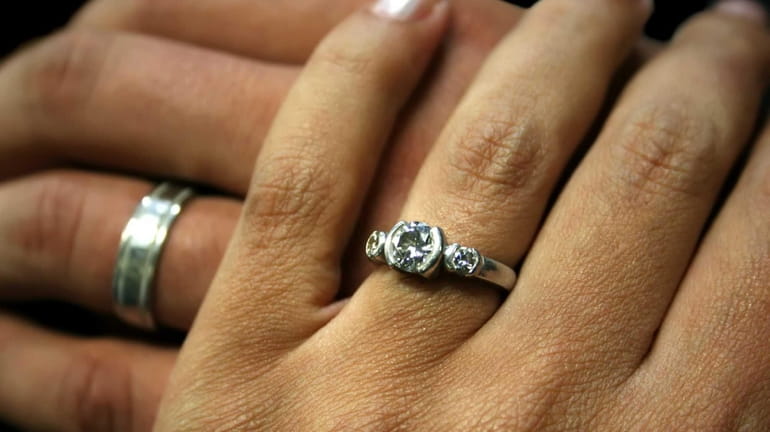How I became a Mrs. on Long Island

Marriage. Credit: iStock
It was January 1970, and I was feeling pressure to find a new place to live. My husband-to-be had just returned from active duty in the Navy, and we were due to be married on Valentine’s Day.
His aunt was in real estate and saw an apartment just listed at her office. It was in an older three-story building in Floral Park, with six apartments on each floor. Lucky for us that the rent was affordable at $163 a month, and the location was even better — walking distance to trains, buses, the A&P around the corner, a movie theater, restaurants, banks and the self-service laundry. I used a dumbwaiter to lift groceries to the second floor, where our apartment was.
My fiance’s family was in Floral Park, and mine was in South Floral Park, so we were both close to our families.
Even so, knowing what I know today, I never would have rented that apartment. Windows in each room looked out at a brick wall and the roof of a strip mall. But at that time it was heaven, and it was ours; we were on our own, free to make our own decisions and create a home.
I was working as a rate calculator for an insurance company in Manhattan, and my husband was resuming his job as a New York City police officer. On the weekends, we visited our relatives.
The apartment was a railroad flat, with rooms off a long hallway. The layout was just like cold-water flats in New York City that I’d read about: bedroom, bathroom, kitchen, dinette and living room. Luckily, we had hot water.
The small kitchen and adjoining dinette were lemon yellow. Everything — appliances and furniture — was harvest gold, a fashionable color of the day.
I received so many things at my bridal shower, some that we never see today: a serving cart on wheels, a hostess set of dishes and utensils for serving company, and a stepstool that doubled as a chair.
I loved that kitchen, with built-in cabinets for groceries, and glass-paned upper cabinets so I could display our wedding gifts, especially dishes and glassware. The kitchen had a wonderful gas-fueled stove on legs, with storage on the side for pots and pans. I learned to cook on that stove, some good (my family’s Italian cuisine), some not so good (roasts), and some just plain bad (a would-be roast that I didn’t realize was just a bone).
We spent a few months in that railroad flat before we moved to another apartment on the same floor. That one had a more conventional floor plan, with a living room entrance, but somehow lacked charm. After I became pregnant, we bought a house in Copiague with help from the GI Bill. Our twins arrived three weeks before we moved from the second apartment.
Years later, when the twins were older, I went back to work. I quickly realized the importance of a college education, so at age 40, I returned to school and earned my bachelor’s and master’s degrees in health care.
When I look back, I realize how different life is now for young women. My husband and I were sweethearts at Sewanhaka High School. We started dating when he was 16 and I was 15. I was just 20 when we got married, which was typical on Long Island.
Times were changing, but even in 1970, many young women were not career-oriented. Their goal was to get married and start families. It was common for a girl who didn’t have a steady boyfriend by high school graduation to fear life as a spinster.
I was also on that family track. Today, when I drive by that apartment building on North Tyson Avenue, I am reminded of happy days where my family began.
Reader Patricia Walsh lives in Copiague.
Patricia Walsh

